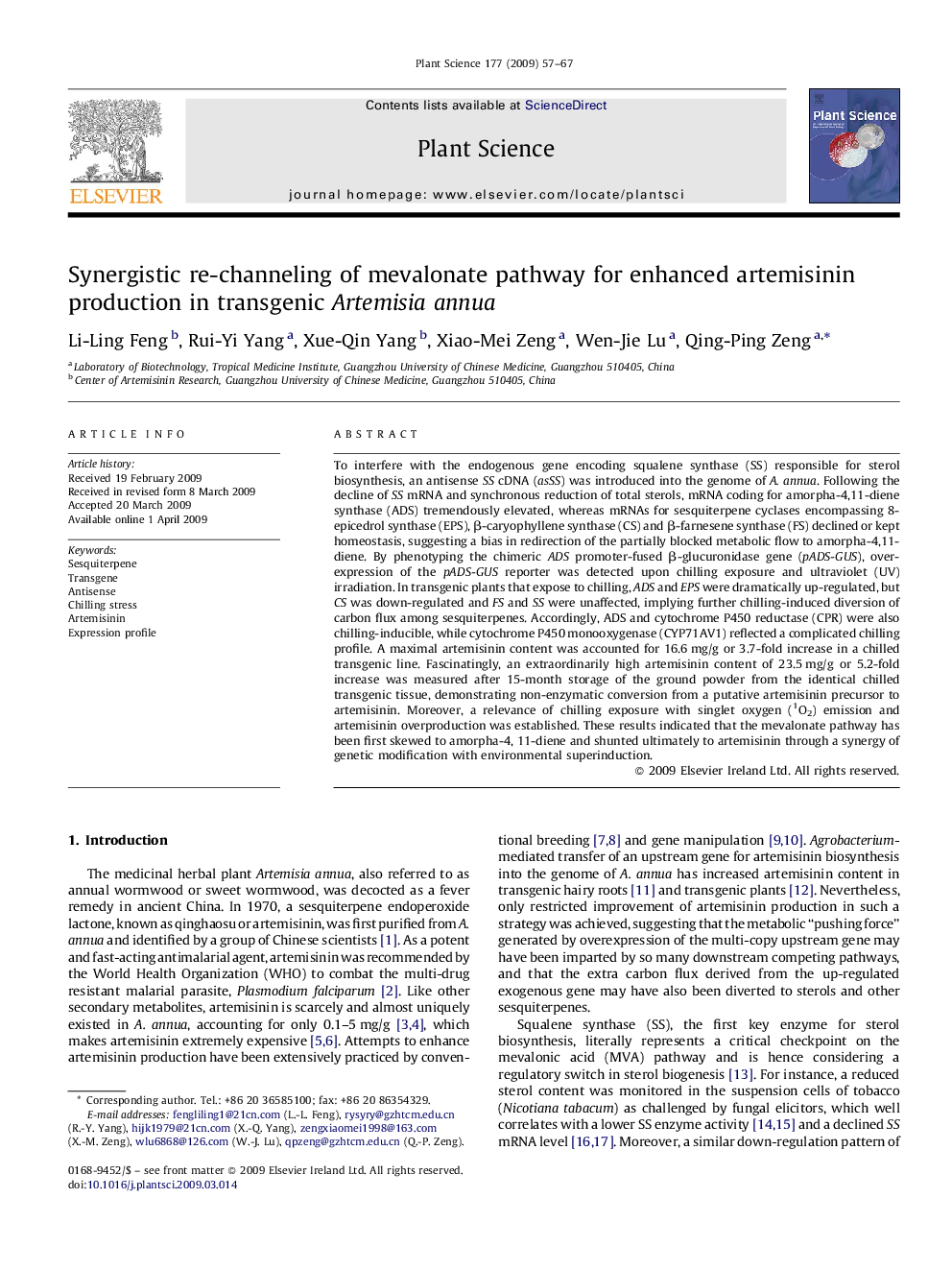| کد مقاله | کد نشریه | سال انتشار | مقاله انگلیسی | نسخه تمام متن |
|---|---|---|---|---|
| 2017955 | 1067826 | 2009 | 11 صفحه PDF | دانلود رایگان |

To interfere with the endogenous gene encoding squalene synthase (SS) responsible for sterol biosynthesis, an antisense SS cDNA (asSS) was introduced into the genome of A. annua. Following the decline of SS mRNA and synchronous reduction of total sterols, mRNA coding for amorpha-4,11-diene synthase (ADS) tremendously elevated, whereas mRNAs for sesquiterpene cyclases encompassing 8-epicedrol synthase (EPS), β-caryophyllene synthase (CS) and β-farnesene synthase (FS) declined or kept homeostasis, suggesting a bias in redirection of the partially blocked metabolic flow to amorpha-4,11-diene. By phenotyping the chimeric ADS promoter-fused β-glucuronidase gene (pADS-GUS), overexpression of the pADS-GUS reporter was detected upon chilling exposure and ultraviolet (UV) irradiation. In transgenic plants that expose to chilling, ADS and EPS were dramatically up-regulated, but CS was down-regulated and FS and SS were unaffected, implying further chilling-induced diversion of carbon flux among sesquiterpenes. Accordingly, ADS and cytochrome P450 reductase (CPR) were also chilling-inducible, while cytochrome P450 monooxygenase (CYP71AV1) reflected a complicated chilling profile. A maximal artemisinin content was accounted for 16.6 mg/g or 3.7-fold increase in a chilled transgenic line. Fascinatingly, an extraordinarily high artemisinin content of 23.5 mg/g or 5.2-fold increase was measured after 15-month storage of the ground powder from the identical chilled transgenic tissue, demonstrating non-enzymatic conversion from a putative artemisinin precursor to artemisinin. Moreover, a relevance of chilling exposure with singlet oxygen (1O2) emission and artemisinin overproduction was established. These results indicated that the mevalonate pathway has been first skewed to amorpha-4, 11-diene and shunted ultimately to artemisinin through a synergy of genetic modification with environmental superinduction.
Journal: Plant Science - Volume 177, Issue 1, July 2009, Pages 57–67